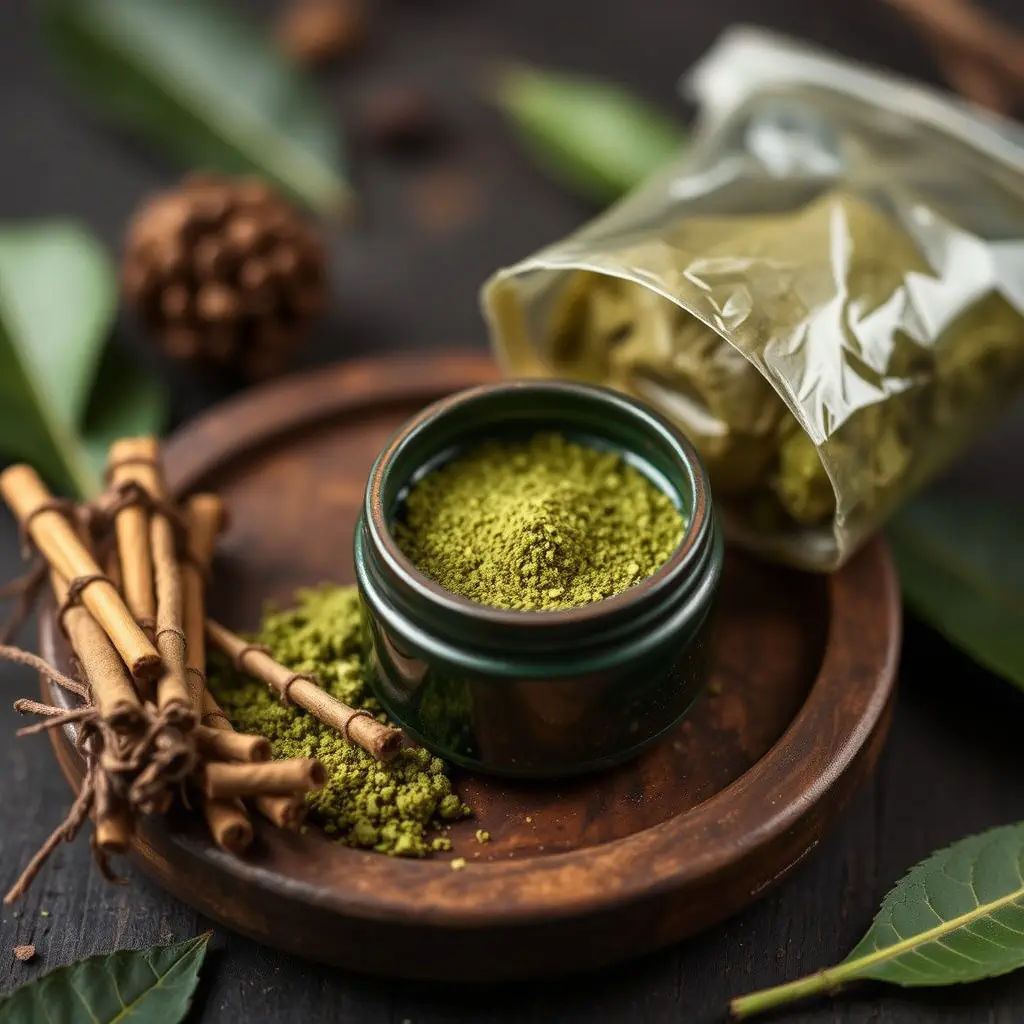Kratom, derived from the Southeast Asian Mitragyna speciosa tree, is increasingly recognized as a natural alternative for stress relief due to its alkaloids mitragynine and 7-hydroxymitragynine. These compounds interact with brain receptors related to mood and pain regulation, potentially offering users a sense of calmness and well-being by affecting neurotransmitters like dopamine and serotonin. It's crucial to use kratom responsibly and within legal guidelines, considering individual factors such as tolerance and dosage for effective stress relief without the typical side effects associated with pharmaceuticals. Potential interactions with other substances underline the importance of consulting a healthcare provider before incorporating kratom into any health regimen. For optimal stress relief, understanding the different kratom strains—such as red vein and green vein—and their unique effects is essential. Proper dosing, starting at a low to moderate range (2 to 5 grams), tailored to individual sensitivity, is as important as selecting the right strain. A holistic approach to stress relief with kratom involves combining it with wellness practices like meditation and yoga, creating a supportive environment, maintaining a balanced diet, staying hydrated, and engaging in mindful activities that cater to personal relaxation preferences. This comprehensive strategy ensures a safe and effective way to achieve tranquility and mental peace through the use of kratom within a holistic health practice.
Discover the transformative effects of kratom in promoting relaxation and tranquility. This article delves into the potential benefits of kratom for stress relief, offering insights on selecting the most suitable strains and understanding optimal dosages to enhance calmness. We guide you through integrating kratom into a holistic relaxation routine that aligns with your wellness goals, ensuring a serene experience. Join us as we explore the pathways to peace and relaxation with stress relief through kratom.
- Unraveling the Potential of Kratom for Stress Relief
- Navigating Kratom Strains and Dosages for Maximized Calm
- Integrating Kratom into a Holistic Relaxation Routine
Unraveling the Potential of Kratom for Stress Relief

Kratom, a tropical evergreen tree native to Southeast Asia, has garnered attention in natural health circles for its potential stress relief properties. The active compounds found in kratom leaves, known as alkaloids such as mitragynine and 7-hydroxymitragynine, are believed to interact with the brain’s receptors, particularly those responsible for mood regulation and pain management. Users often report a sense of calmness and well-being after consuming kratom, which can help alleviate the physical and psychological symptoms associated with stress. This effect is thought to be due to the alkaloids’ influence on neurotransmitters like dopamine and serotonin, which play critical roles in mood regulation. As a result, kratom may offer a natural avenue for stress relief without the side effects commonly associated with pharmaceutical interventions.
When considering kratom for stress relief, it is crucial to approach its use responsibly and within legal frameworks. The efficacy of kratom can vary greatly among individuals due to factors such as tolerance, dosage, and strain. It is advisable to consult with a healthcare provider before integrating kratom into any stress management regimen, especially given the potential for interactions with other substances and the need for precise dosing to achieve the desired calming effects. By understanding how kratom can influence one’s physiological response to stress, individuals may find a beneficial addition to their holistic health practices.
Navigating Kratom Strains and Dosages for Maximized Calm

Kratom, a plant native to Southeast Asia, has garnered attention in various health and wellness circles due to its potential for stress relief with kratom. When seeking relaxation and calmness through kratom, it is crucial to understand the different strains and their unique effects. The two primary kratom strains are the red vein and the green vein, each offering distinct benefits for promoting a sense of tranquility. Red vein kratom strains, such as Bali or Borneo, are often favored for their sedative qualities, making them ideal for winding down at the end of a long day. On the other hand, green vein kratom varieties, like Green Malay or Green Indo, tend to offer a more balanced effect, promoting a state of calm without overwhelming drowsiness.
Determining the appropriate dosage is as essential as selecting the right strain for stress relief with kratom. The dosage can significantly influence the intensity and duration of its effects. For beginners, starting with a lower dose can help assess individual sensitivity and tolerance. Typically, a moderate dose—ranging from 2 to 5 grams—is often recommended as a starting point for adults. It is important to consider personal physiology and kratom’s interaction with one’s unique body chemistry. Users should proceed with caution, increasing the dosage gradually if necessary. Always prioritize adhering to safe usage guidelines and consulting with healthcare professionals before integrating kratom into a wellness routine for stress relief. By carefully selecting the appropriate strain and finding your personal sweet spot in terms of dosage, kratom can be a valuable ally in your quest for relaxation and calmness.
Integrating Kratom into a Holistic Relaxation Routine

Kratom, a botanical derived from the leaves of Mitragyna speciosa, has gained attention in holistic health circles for its potential stress relief properties. When integrated into a relaxation routine, kratom can offer a soothing effect that promotes tranquility and peace of mind. It’s important to approach its use responsibly, adhering to recommended dosages and considering individual sensitivities. For those seeking to incorporate kratom into their holistic relaxation practices, it should be paired with complementary techniques such as deep breathing exercises, meditation, or yoga to enhance overall well-being. These activities can synergize with the calming effects of kratom, creating a harmonious experience that facilitates stress relief and fosters a state of calmness. Additionally, establishing a consistent environment conducive to relaxation, like a serene space in your home or a natural setting, can amplify the benefits derived from kratom consumption.
In conjunction with a balanced diet and adequate hydration, kratom can be a harmonious addition to a holistic approach aimed at managing stress and promoting relaxation. It’s crucial to combine its use with other wellness practices like aromatherapy, gentle music, or mindful activities that align with your personal relaxation preferences. This comprehensive strategy ensures a multifaceted approach to managing stress, where kratom acts as one component within a broader routine designed for calmness and serenity. Always prioritize safety by consulting with healthcare professionals before integrating kratom into your holistic practices, ensuring that it complements rather than complicates your health regimen.
Incorporating kratom into a routine can be a valuable approach for those seeking stress relief. The nuanced effects of different strains and proper dosage are pivotal in achieving a state of calmness. By understanding the potential of kratom and integrating it with other holistic practices, individuals may find a harmonious balance that promotes tranquility effectively. It’s clear that for those who choose to explore this path, kratom has the potential to play a role in a comprehensive strategy for relaxation and stress management. Always consult with healthcare professionals when considering any new supplement or approach to health and well-being.






